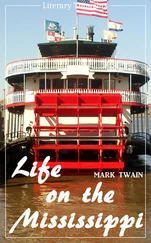The U.S. embassy in Tehran stood behind high brick walls midway down the city’s muscular slope, where the land flattened into miles of low brown slums and, beyond them, the horizon-wide Dasht-e Kavir salt desert. Inside the enclosure was a parklike campus, a twenty-seven-acre oasis of green in a smoggy world of concrete and brick. Its primary structure, the chancery, bathed now in the swirling mist of the water angel, stood fifty or so feet behind the front gate, a blocks-long structure two tall stories high built in the dignified art deco style typical of American public buildings at midcentury. It looked like a big American high school, which is why years ago it had been dubbed “Henderson High,” after Loy W. Henderson, the first U.S. ambassador to use it, in the early fifties. Scattered beneath a grove of pine trees behind the chancery were the new concrete consulate buildings; the white Ambassador’s Residence, a two-story structure with a wraparound second-story balcony; a smaller residence for the deputy chief of mission; a warehouse; a large commissary; a small office building and motor pool; and a row of four small yellow staff cottages. There were tennis courts, a swimming pool, and a satellite reception center.
When the embassy opened more than four decades previously, Tehran had been a different place, a small but growing city. The United States was then just one among many foreign powers with diplomatic missions in Iran. Before the chancery stood a low, decorative wooden fence that allowed an unobstructed view of the beautiful gardens from Takht-e-Jamshid, which was then just a quiet side street, paved with cobblestones. In those days, the new embassy’s openness and its distance from the row of major missions on busy Ferdowsi Avenue contributed to America’s image as a different kind of Western power, one that had no imperial designs.
In the years since, Tehran itself had grown noisy and crowded, a bland, featureless, unplanned jumble of urgent humanity that flowed daily in great rivers of cars through uninteresting miles of low, pale brown and gray two-and three-story boxlike buildings. Takht-e-Jamshid’s quaint cobblestones had long since been paved and the avenue widened. In daylight it was clogged with cars, motorbikes, and buses. The embassy’s main entrance, Roosevelt Gate, was named after Franklin D. Roosevelt, whose distant cousin CIA officer Kermit Roosevelt, Theodore’s grandson, had helped engineer the 1953 coup d’état that toppled an elected Iranian government and replaced it with the shah. At the time, the coup had powerful Iranian backers and was welcomed by many in the country, but today it was seen simply as a tawdry American stunt, another example of cynical CIA meddling in the Third World.
By the fall of 1979, in the receding tide of the revolution, the old embassy had become a provocation. It was moored like an enemy battleship just a stone’s throw from the street, a fact demonstrated repeatedly. For a country in a fit of Islamist, nationalist, and increasingly anti-American fervor, such a grand and central presence in the capital city was a daily thumb in the eye. Lately most of the harassment had been relatively minor. The walls that now surrounded Henderson High and its campus were covered with insults and revolutionary slogans and were topped by three feet of curved and pointed steel bars. A few days earlier a band of young men had sneaked into the compound and were caught shinnying up the big pole in front of the chancery to take down the American flag. The marines had since greased the pole. As a defense against rocks and an occasional gunshot from passing motorists, all of the windows facing front had been layered with bulletproof plastic panels and sandbags. The chancery looked like a fort.
While the Americans inside saw these changes as purely defensive, the picture they presented strongly encouraged suspicion. The embassy was an enemy foothold behind the lines of the revolution. Washington had been the muscle behind the shah’s rule, and a big part of throwing off the monarchy had been the desire to break Iran’s decades-long fealty to Uncle Sam. Yet here the embassy still stood. Those Iranians who supported the United States—and there were many still among the prosperous middle and upper classes—prayed that its obdurate presence meant the game wasn’t over, that the free world was not really going to abandon them to the bearded clerics. But these were an embattled, endangered minority. To the great stirred mass of Iranians, afire with the dream of a perfect Islamist society, the embassy was a threat. Surely the architects of evil behind those walls were plotting day and night. What was going on inside? What plots were being hatched by the devils coming and going from its gates?
Why was no one stopping them?
2. Would the Marines Shoot?
A big demonstration was already in the works that morning, which had been proclaimed National Students Day, in honor of collegiate protesters who had been gunned down by the shah’s police the year before. The numbers of those massacred had been wildly inflated, from a few score to “thousands,” which played to Shia Islam’s obsession with martyrdom. In addition to honoring the slain students, this rainy Sunday had also been declared an official day of mourning for more than forty pasdoran, Revolutionary Guards, who had been killed in a clash with Kurdish separatists the week before. There would be thousands of people in the streets. Hashemi and the others planned to launch their surprise from inside this larger crowd.
Standing before a crowded room he explained that the assaulters would be divided into five groups, one for each of the embassy’s larger buildings. The initial thrust would be through Roosevelt Gate. Local police would not interfere—their support had been quietly enlisted—but there was no telling what the Americans would do. If they opened fire, then the bodies of those martyred in the vanguard would be passed out to the crowd and carried aloft through the streets, sure to incite rage. When the planning session ended, the students drifted across town to the rallying point, the corner of Takht-e-Jamshid and Bahar Street, several blocks west of the embassy. Thousands had already begun to assemble in groups of twos and threes, in cars and on foot.
The plan had been hatched by a dozen young Islamist activists, representatives from each of Tehran’s major universities, who had formed just weeks before a group that called itself Muslim Students Following the Imam’s Line, to differentiate itself from factions with agendas that varied from the teachings of Imam Ruhollah Khomeini. Hashemi was the son of an Isfahan cleric and had been raised in the devout traditions of Shia Islam. Unlike the city’s other large universities, Amir Kabir was strictly Islamist. Classes were conducted as though teachers and students were together in a mosque, and prayer was a big part of every day and night. Robed women students did not speak to men other than family members unless the situation required it, such as working together in a lab. While Marxist and other leftist groups tended to dominate on the bigger, more secular campuses such as Tehran University, where the religious students were often still an unpopular minority, Amir Kabir was known as a center for Islamist radicals, young people strictly allied with Khomeini and the new mullah establishment.
All men in the Islamic organizations called each other “brother,” but Hashemi was part of a smaller, militant inner circle called the Brethren—“brothers who were more brothers than others,” was how one would later explain it. Most of those recruited for the takeover effort were simply students, but the Brethren were something more. They would eventually form the nucleus of the new Iran’s intelligence ministry. They were armed at all times and had connections with the powerful clergy and with high-ranking officials in the police and the provisional government who had sympathy for their political agenda. Hashemi had not been one of the instigators of the plot to seize the American embassy that day, but when those plans were formed he was naturally one of the first approached for help.
Читать дальше












